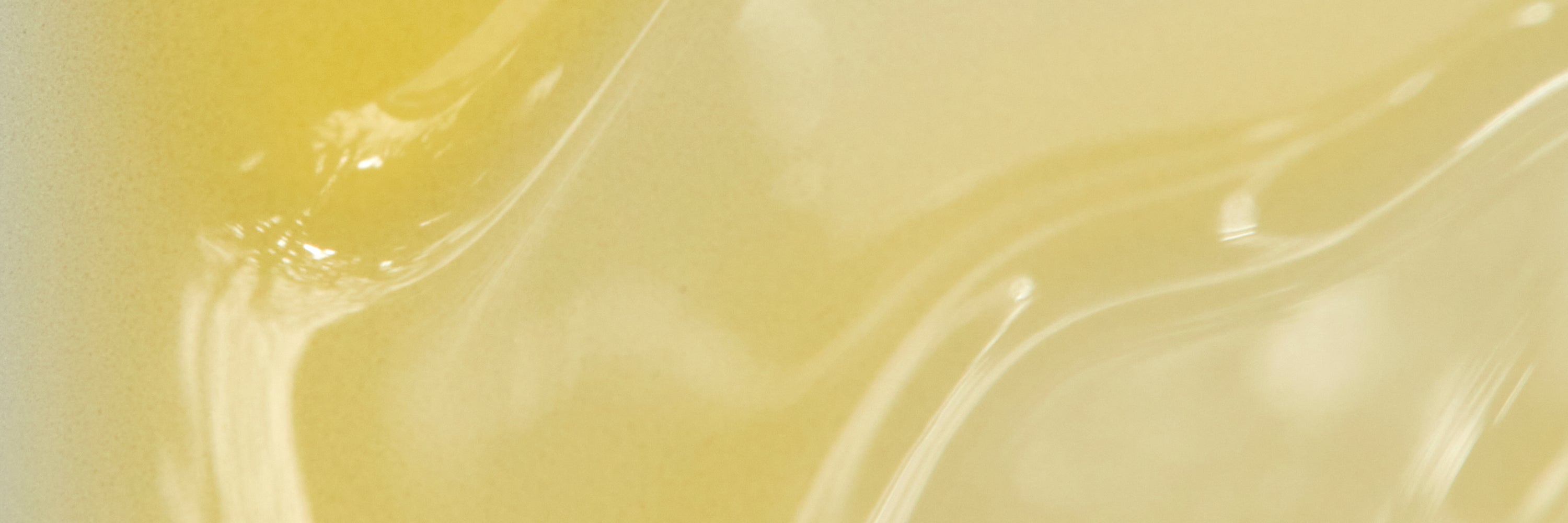Solubility
Oil vs water: the importance of solubility
Two of the most important principles for effective skincare products are hydration of the skin and lipid barrier protection – and, crucially, these formulas’ solubility (the degree of their ability to dissolve in oil or water). Understanding solubility provides the key to optimising the use of almost any skincare formula.
From cleansing to moisturising, oil-based products help strengthen your skin's protective lipid barrier, which protects your skin from external and environmental threats: hazards of pollution, central heating, air conditioning and UV rays. Oils also help seal in moisture, soothe sensitive skin, and are often appealing to use, imparting a nourishing, luxuriant feel - but to have a balanced routine that is genuinely effective, water-based products are just as important.
The impact of a product always depends on the composition of the compound in which the active ingredients are held. For example, hyaluronic acid, one of the most important ingredients in skincare for its moisturising properties, can only be available – and thus effective – in water-based formulations. Water is the best source of hydration for skin, and while oil cannot replace this, use of oil with water is critical to achieving best effects.
Molecular structure, temperature, pressure: all of these determine solubility of an ingredient and a compound. Increasing water (whether internally or externally) is the best way to hydrate your skin, but pure water evaporates before it can penetrate beyond your skin's surface. So, it is necessary to ‘hold onto’ the water in order for the skin to benefit from it: hence, the vital role of humectants and emollients.
The solubility of a product is important in determining the effects of the products on the skin. The stratum corneum, or outer layer of skin, is packed tightly with skin cells and between them, fatty lipids. To have the ability to transition through this structure an ingredient must be compatible with either fatty lipids or the skin cells. In theory, lipophilic (‘fat-loving’, fat-soluble) molecules can penetrate fat easily, on an intercellular approach meaning that they move in between the cells through the fatty lipids. Hydrophilic, or water-soluble, ingredients may be able to pass through water-based cells, taking instead a transcellular path. However, one of the very strengths of the skin’s structure is that each cell has its own designated individual barrier – the fatty cell membrane which surrounds it – making infiltration of the cell more difficult. Therefore, to enable penetration and gain best effect an ingredient has to be compatible with water but also be sufficiently lipophilic.
For an ingredient to achieve the desired effect, it must be soluble in the type of tissue for where it needs to act to achieve this effect. The interior of skin cells is mostly water and to remain there an ingredient therefore must be water-soluble; the boundaries of these cells, however, comprise lipid-soluble membranes. This makes effective delivery of active ingredients a challenge: water soluble substances will not be able to pass through the border of the cell to the inside of the cell where they need to conduct the intended activity. Therefore, the formula must comprise a sufficient ratio of fatty/oily substances and watery substances in order to pass through cell membranes to the interior of the cell. Furthermore, only certain types of fats with specific features (smaller molecular size, for example) will pass through the borders of skin cells and other skin structures.
Humectants are ingredients that attract and hold water, and the most predominant in effective skincare today are hyaluronic acid, aloe and glycerin, all of which slow the evaporation process of water from the skin by acting like a sponge, absorbing water and then releasing it gradually. Water-soluble ingredients such as vitamin C or niacinamide require a water-based serum for delivery, whereas ingredients such as alpha lipoic acid and coenzyme Q10 are both oil-soluble and therefore always require an oil-based compound as a vehicle for effective use.
While the formula of each product differs slightly, most skincare formulas contain a combination of at least some of the following core ingredients: water, emulsifier, preservative, thickener, emollient, colour, fragrance and pH stabilisers. Water forms the basis of almost every type of cosmetic product, often acting as a solvent to dissolve other ingredients and forming emulsions for consistency. Crucially, it must be completely pure: free from bacteria, toxins and other pollutants and hence in the context of ingredients will be referred to as distilled water, purified water or just ‘aqua’.
Dermatological and clinical cosmetic research has shown that anhydrous (that is, containing no water) products have several advantages over products with a high water content. They penetrate the skin barrier more efficiently, delivering lipophilic functional ingredients into cells where they are needed and when lipophilic functional ingredients are dissolved in oil-based formulations their skin penetration is further enhanced.
In contrast, products containing significant amounts of water, and water-soluble functional ingredients, do not penetrate the skin barrier as efficiently. This reduces the availability of the active compounds where they are needed at the cellular level (known as their bioavailability). In addition, lipophilic functional compounds tend to be more stable.
One significant example is vitamin C, which in its standard form (ascorbic acid) is water soluble. In this form it does not penetrate into skin well, is very unstable and thus quickly broken down. By using oil-soluble ester forms of vitamin C (such as ascorbyl palmitate, tetrahexydecyl ascorbate) it becomes more stable, and therefore has the ability to penetrate in significantly greater amounts: then, once within the skin tissue it is converted to the standard form of vitamin C by the enzyme esterase. This same approach can often be usefully adopted with esters of vitamin A and vitamin E.
Other functional ingredients such as antioxidant carotenoids, CoQ10, ferulic acid and alpha lipoic acid, are mostly oil soluble and therefore make good choices for cosmeceutical products. Finally, products whose primary ingredient is water are sometimes thought to be damaging if used alone, and frequently: with the use of only a water-based product, the damage results from the drying effects of the product’s water evaporating from the skin surface, and the ensuing disruption of skin barrier lipids by the emulsifiers. To achieve the best hydrophilic-lipophilic balance and the best effects for skin, ratio and quantity of oil and water in formulas, treatments and routines are key.
Further reading and research
Pharmaceutical Research, August 2010, Volume 27, Issue 8, pp1746-1749 Application of Nanotechnology in Cosmetics Li Mu, Robert L. Sprando Skin Pharmacol. Physiol. 2007; 20(1):10-20. [Epub] 2006 Oct 11 In vitro percutaneous absorption and in vivo stratum corneum distribution of an organic and a mineral sunscreen A Mavon, C Miquel, O Lejeune, B Payre, P Moretto Food Chem. Toxicol. 2015 Nov;85:127-37. doi: 10.1016/j.fct.2015.06.020. [Epub] 2015 Jul 6. Nanotechnology in cosmetics LM Katz, K Dewan, RL Bronaugh



